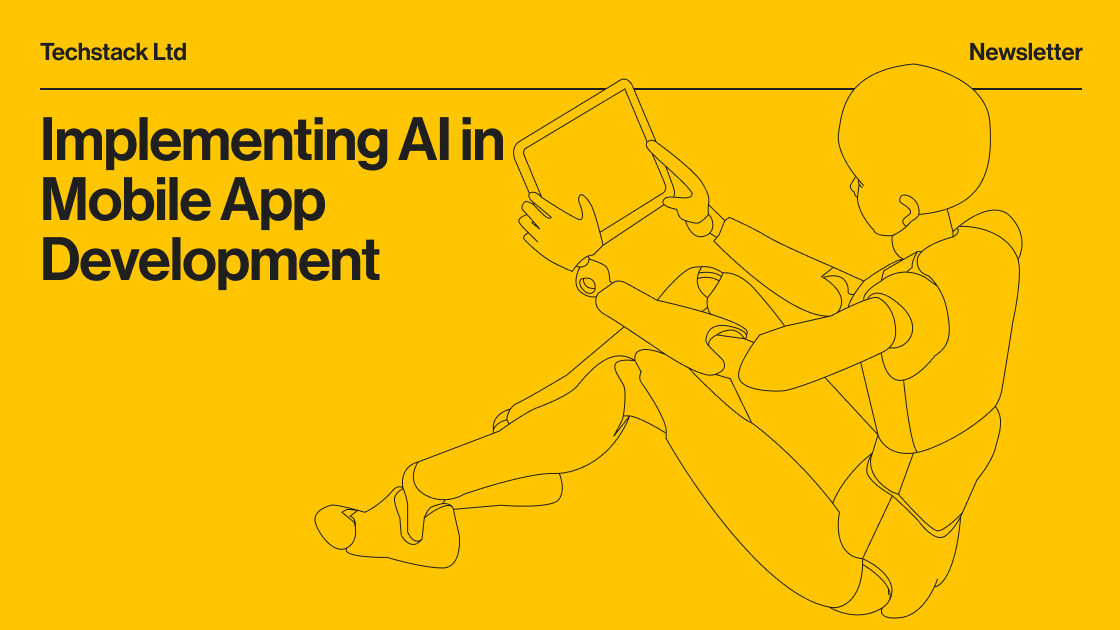
Implementing AI in Mobile App Development
Author: Anton Ivanchenko , Global Partnership Manager at Techstack Ltd
When it comes to AI in mobile apps, users already expect a high level of personalization, seamless interactions, and accurate image or text recognition. Meanwhile, developers increasingly use AI tools that check for code software issues, maintain infrastructure, and generate lines of code.
Companies should follow these essential steps to effectively integrate AI into mobile app development or the apps themselves.
1. Identify opportunities for AI integration
You should evaluate existing features, user interactions, and performance metrics to find inefficiencies and opportunities for enhancements. Study competitors who have integrated AI to adopt good practices and avoid potential pitfalls.
Analyzing feedback from employees and customers can point toward common pain points and desired features. A comprehensive analysis will help you understand what users want in your product and how to use AI in mobile app development truly effectively.
2. Define objectives and success metrics
Set specific, measurable, and achievable goals for your project that AI can help you achieve. These can include accelerating development, improving bug detection, reducing customer churn, or expanding market reach. You need to determine key performance indicators (KPIs) to understand whether the implementation has been successful.
3. Choose technologies and tools
Outline the tech stack based on project needs and target audience. First of all, decide if you want to develop a custom solution or get an off-the-shelf AI model. For example, you may opt for a ready-made AI tool for CI/CD automation or invest in a custom solution with a more isolated infrastructure and tailored workflow scenarios.
If you choose to go with existing options, you need to compare them based on the deployment type (on-premise or cloud-based), scalability, support, and payment model. Also, check what other companies say about customizability and the ease of integration.
4. Build and train AI models
Gather high-quality data from IoT devices, user interactions, transaction logs, and external datasets. The data must be cleaned, preprocessed, and diversified to ensure accuracy and prevent biases (more on it later). It’s worth creating a feedback loop to continuously train and refine AI models based on new data and performance outcomes.
5. Validate the AI model
Develop a Proof of Concept (PoC) with rudimentary UI/UX and core features to validate your project. Use a more advanced Minimum Viable Product (MVP) to test the concept on a small group of users. The results of these tests will tell you if the project is worth pursuing further and, if so, act as a basis for full-scale development.
6. Integrate AI into the app
Ensure AI components integrate smoothly with the app’s existing architecture by using APIs and SDKs for communication. At this stage, you need to optimize algorithms to handle large-scale user interactions. You may use on-device and cloud-based processing to scale resources dynamically.
7. Monitor and optimize
AI and mobile apps are never truly done. You should set up performance monitoring systems, continuously gather feedback, and use this data for improvement. Establish automated testing for your DevOps and QA pipelines to streamline updates and new feature deployments.
As with all technologies, AI integration is always easier said than done. You should be aware of several potential problems.